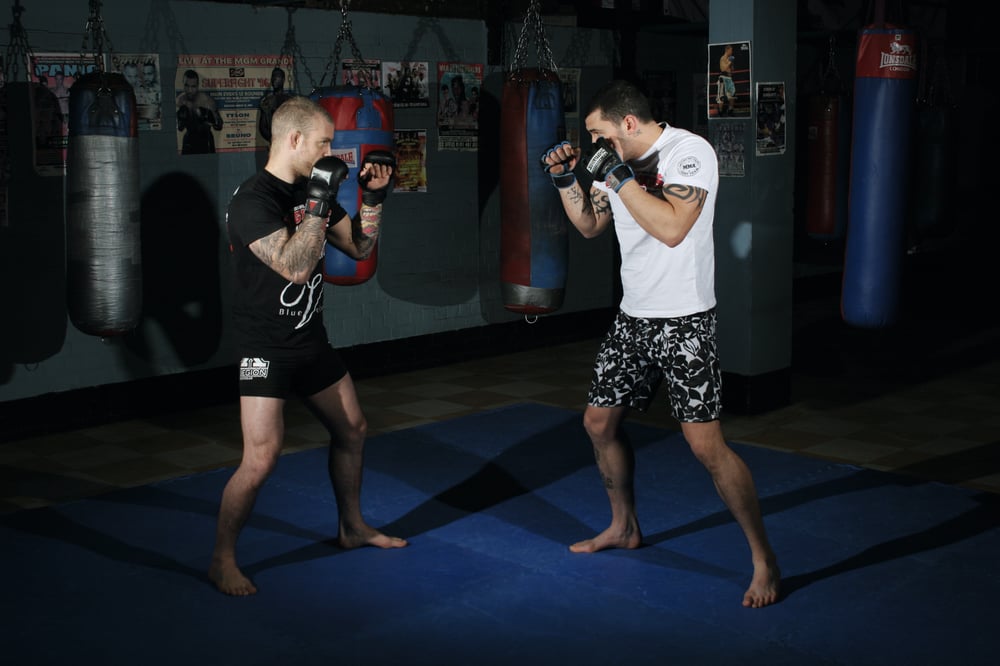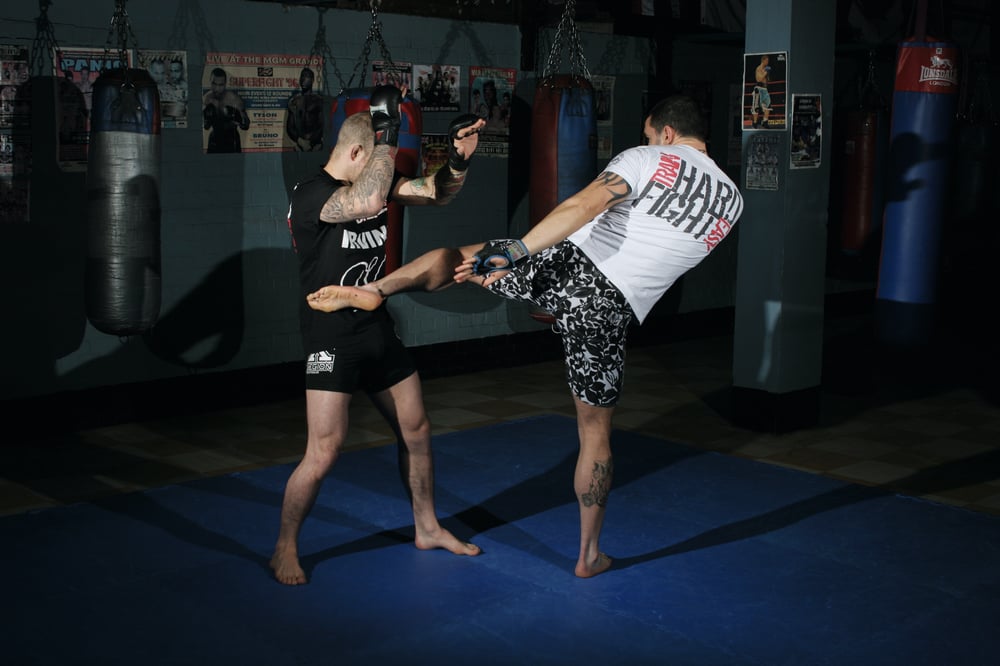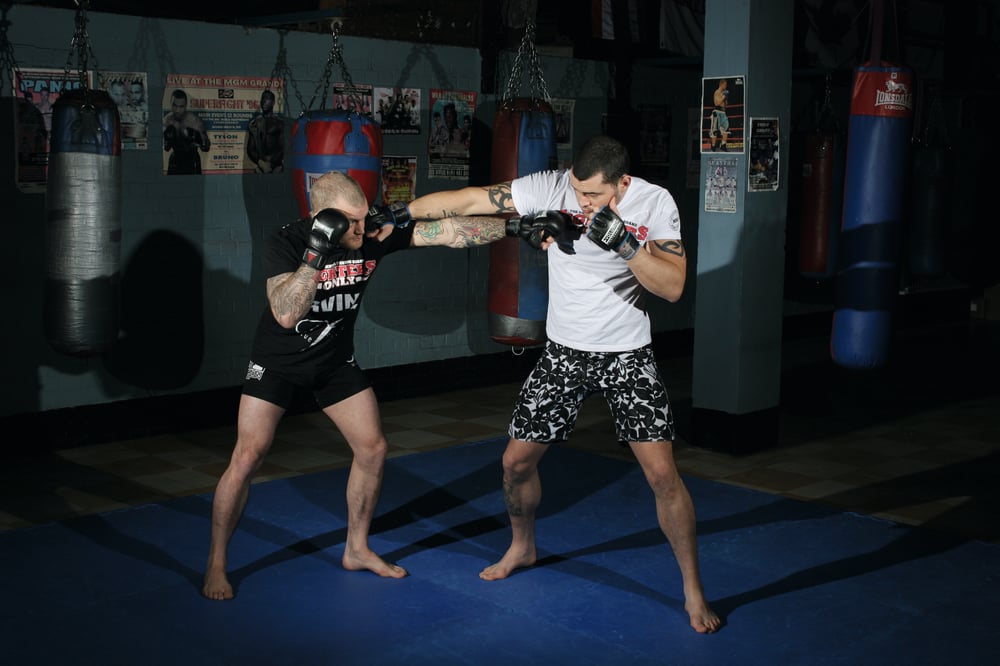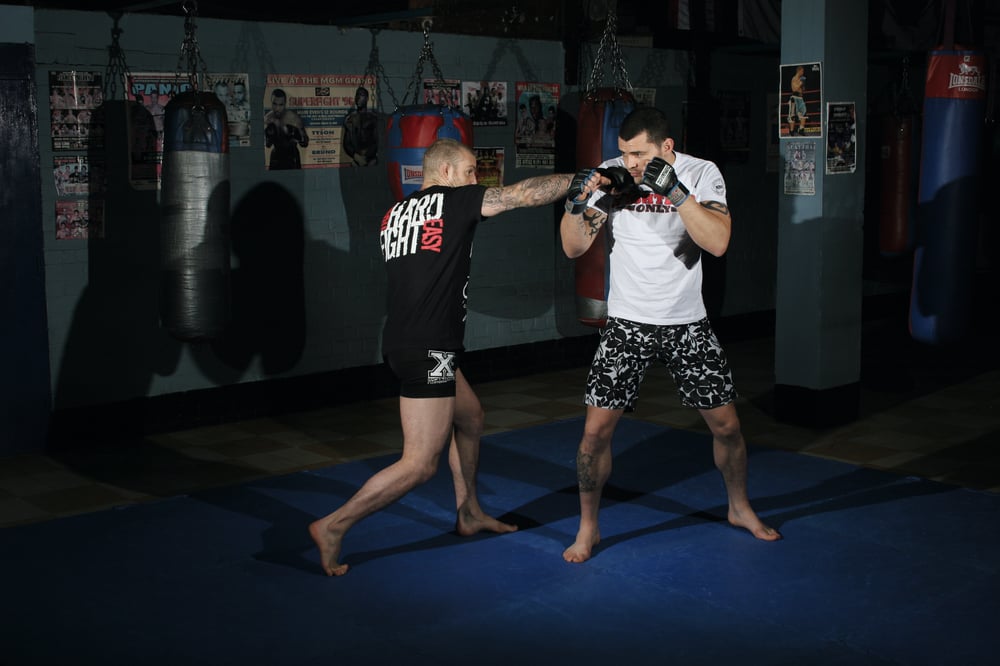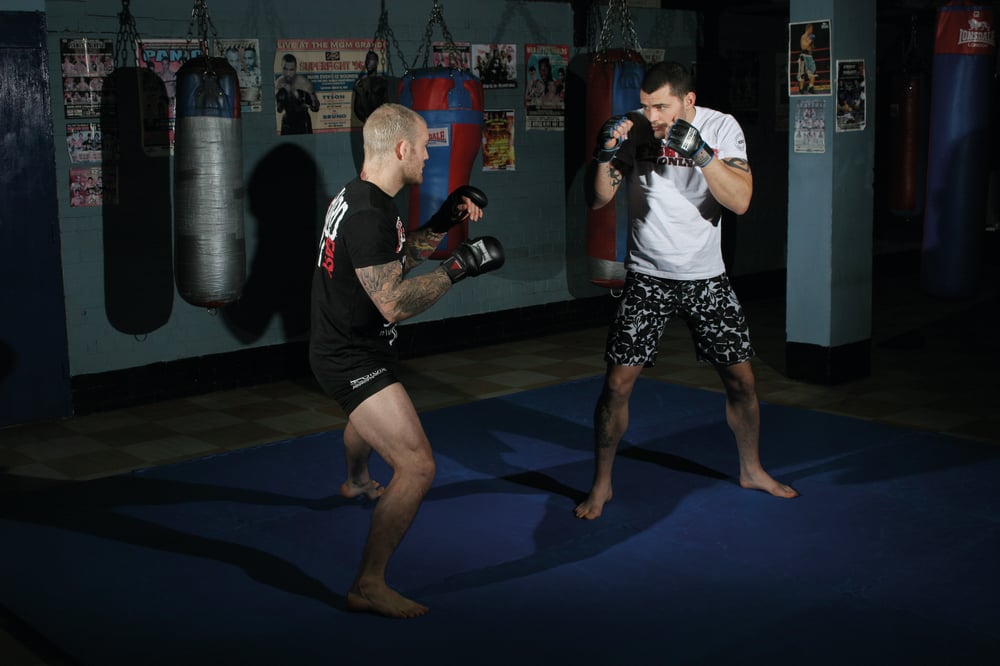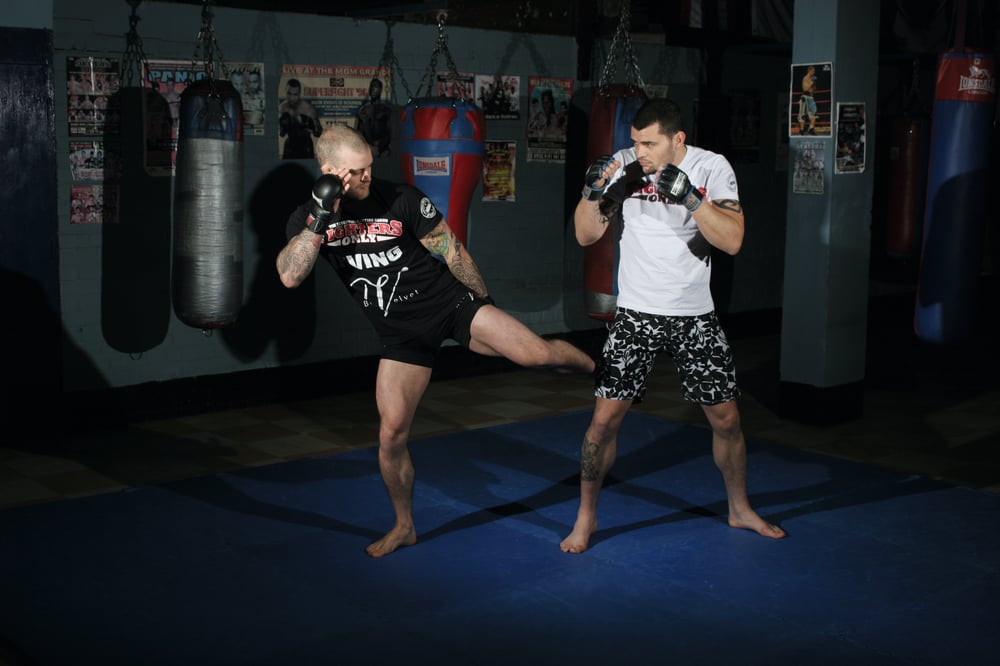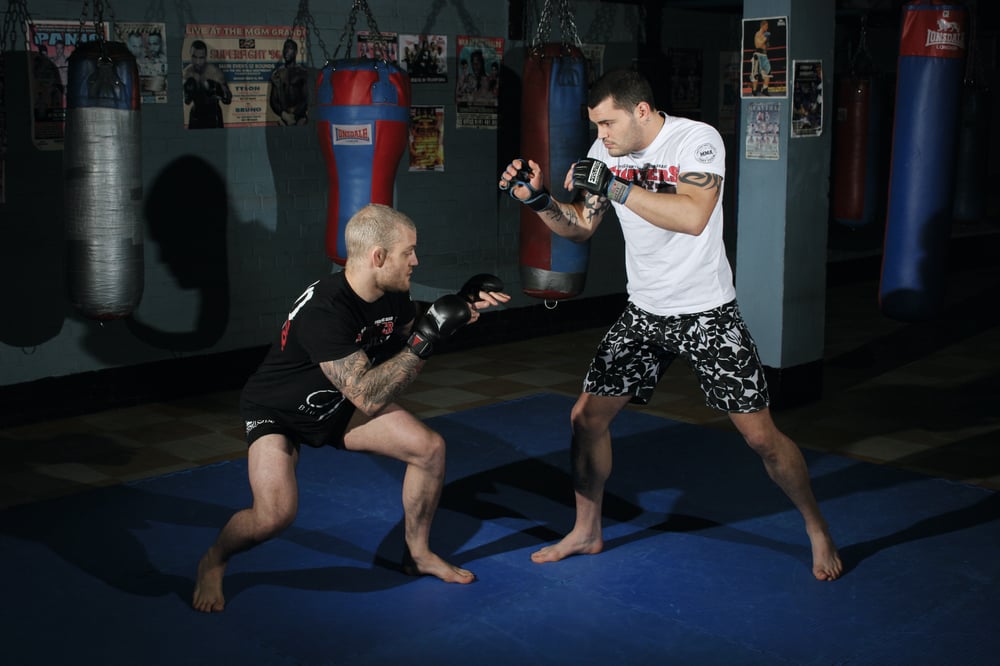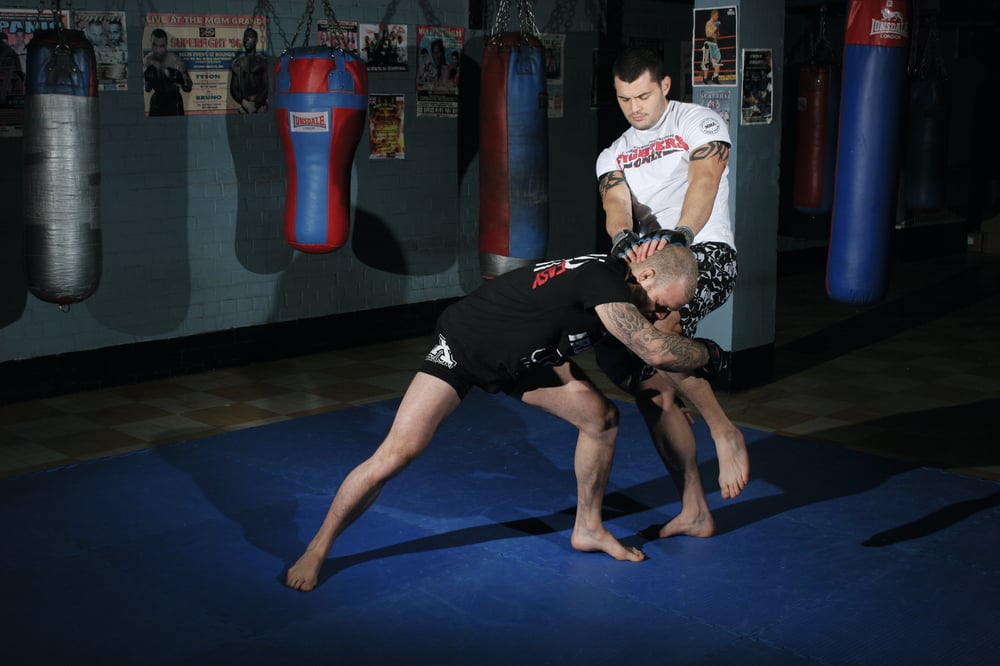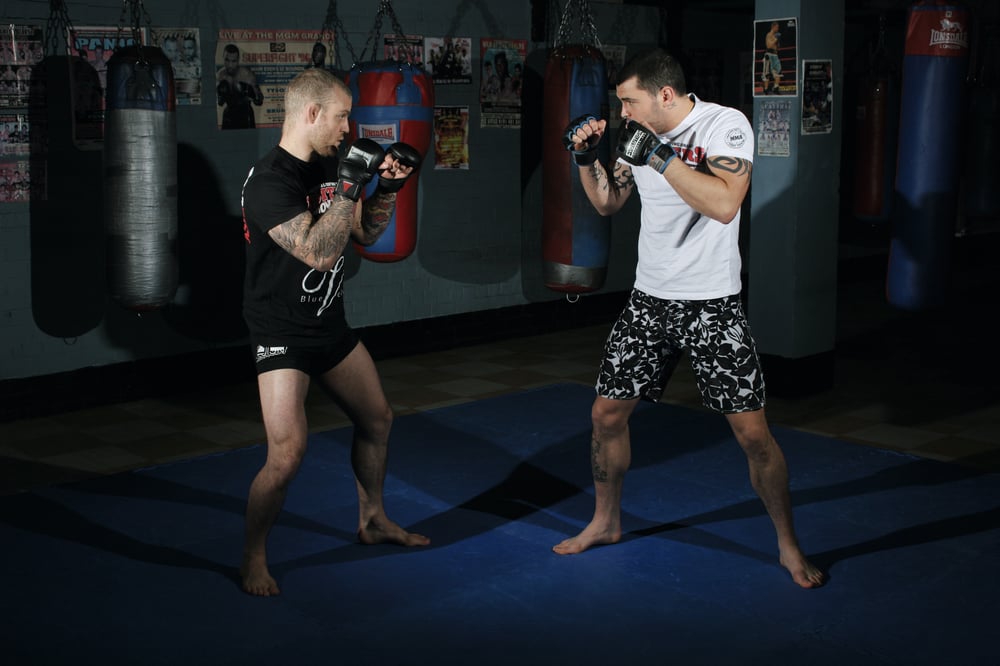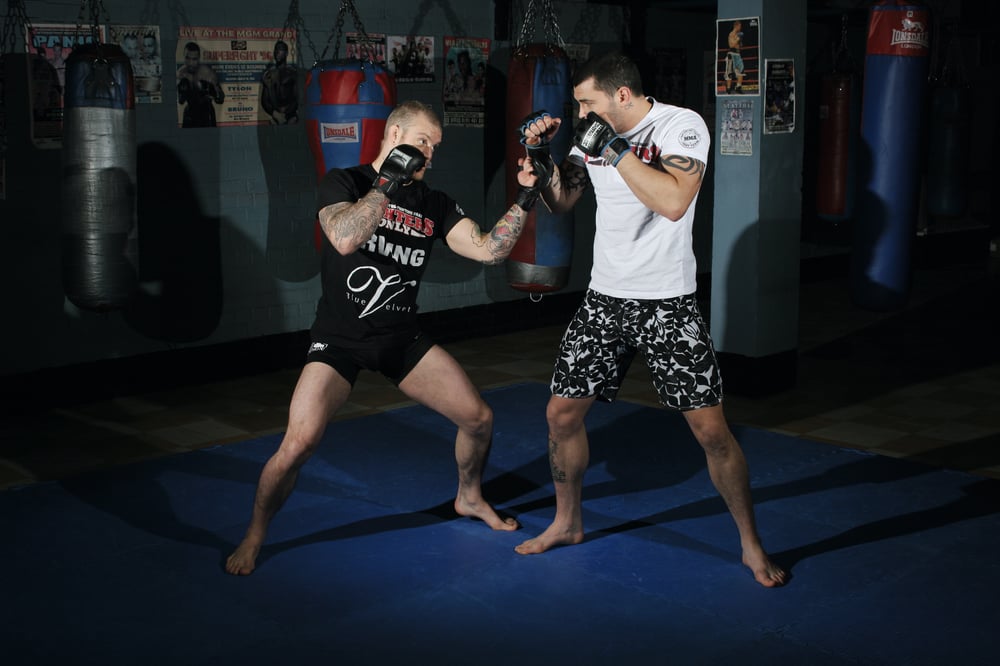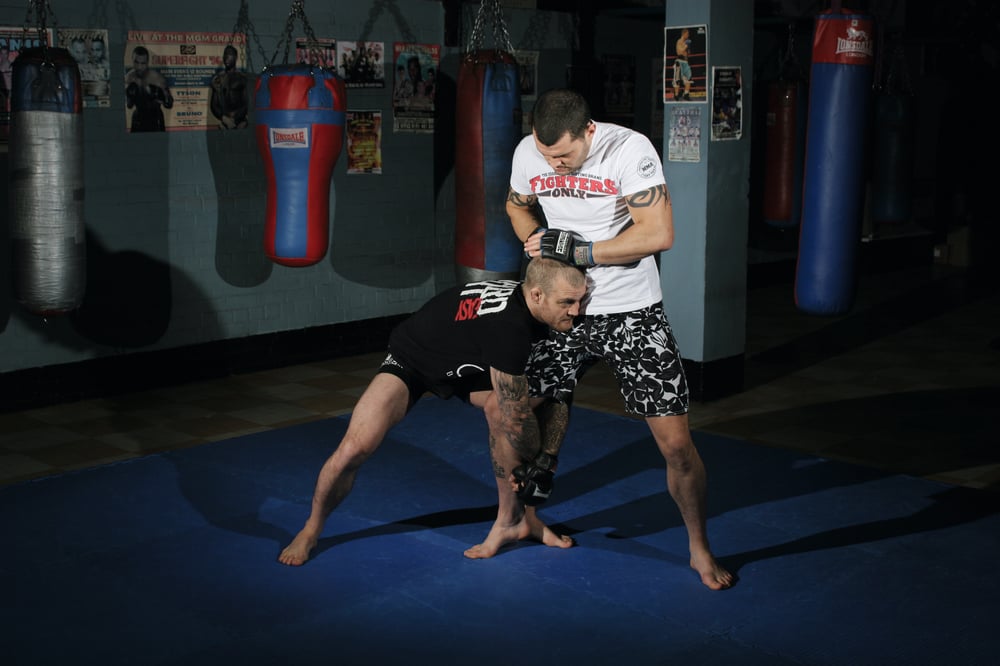
Issue 046
February 2009
With Pete Irving.
Facing a left-handed fighter can cause problems for even the most seasoned of professionals. Finding the range can be tricky, and familiar combinations start to land wide of the mark. Many gyms have no, or few, southpaw fighters on the roster, so it is important to take turns in playing the part of the lefty in sparring, and working on the tactics necessary to deal with the southpaw.
Identifying the power shots of the left-handed fighter
Review some footage from the heyday of Mirko ‘Cro Cop’ in Pride. You’ll see the devastating effect of a powerful left kick and left cross against opponents who just couldn’t quite manoeuvre out of harm’s way.
Step 1 Pete (black) and Knox (white) square up. Pete has an orthodox stance (left leg leading) while Knox stands southpaw (right leg leading). His power leg and power hand are the opposite of an orthodox fighter’s.
Step 2 Knox throws a left cross. The shot can sail right through the guard of an orthodox fighter
Step 3 Knox lets loose a left body kick. Again it can come right underneath the blocking arms.
Step 4 Don’t trade jabs with a lefty! Normally the orthodox fighter comes off worse in a jabbing duel, falling shy of the target while the southpaw connects.
Creating angles, pt 1
It is necessary to cut the angle in order to do your work without walking in to the southpaw’s offence. Simply circling left all the time is not good enough – every southpaw will anticipate this, so it’s necessary to practise footwork that will be fast and unpredictable.
Step 1 Pete and Knox are squared off on the same ‘line’.
Step 2 Pete steps off the line, facing Knox at a 45 degree angle.
Step 3 Now he’s lined up to throw his right cross…
Step 4 …and his left hook. Left hook / right cross, and right cross / left hook are some effective boxing combinations that orthodox fighters can employ when faced with a lefty.
Creating angles, pt 2
Step 1 Pete and Knox are squared off on the same line.
Step 2 Pete takes a lateral step, sliding out across the line.
Step 3 Pete makes a fast switch step, bringing his right leg over to the same angle as the left leg.
Step 4 Pete kicks Knox’s lead leg just above the knee.
Takedowns on the southpaw
Be careful when shooting in on a southpaw, as the double-leg can be dangerous! Like your striking, your takedowns will need to be adjusted to allow for the attacks coming at you from different angles.
Step 1 Pete and Knox are squared off. Note that Pete has correctly manoeuvred his lead foot to left of Knox’s lead foot.
Step 2 Pete level changes, looking to shoot the double-leg takedown.
Step 3 The added distance to the back leg gives Knox plenty time to see the shot coming and time a counter-knee.
Screw-shot to single leg
Step 1 This time Pete will keep his left foot on the outside, making it hard for Knox to catch him with any strikes on the way in.
Step 2 Pete closes the distance with a screw-shot.
Step 3 Pete goes for the single-leg takedown (head on the inside) with his left foot behind Knox’s right foot.
Step 4 Pete lifts the leg, putting all of Knox’s weight on his back leg. From here he can drive him to the mat.
Peter Irving is a professional welterweight fighter and Fighters Only’s resident fight expert. With a record of 9-5-1, Irving has fought in Europe and the USA and currently holds the Strike & Submit European title


